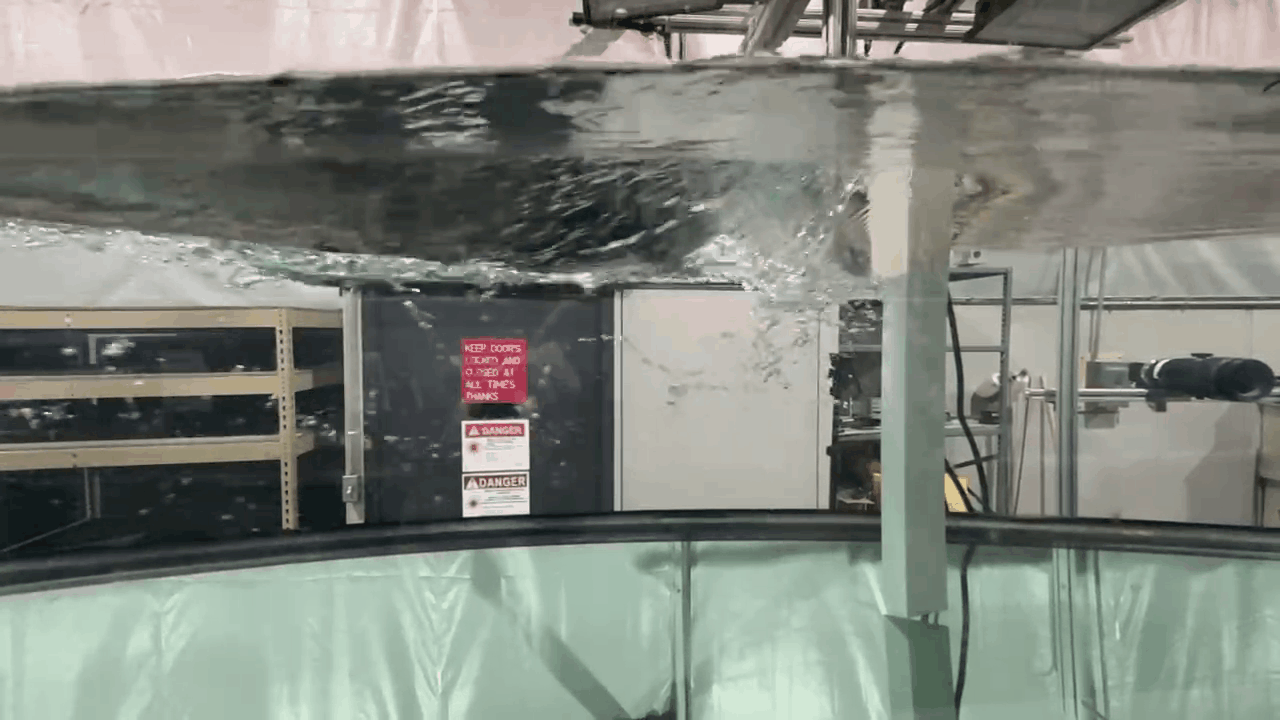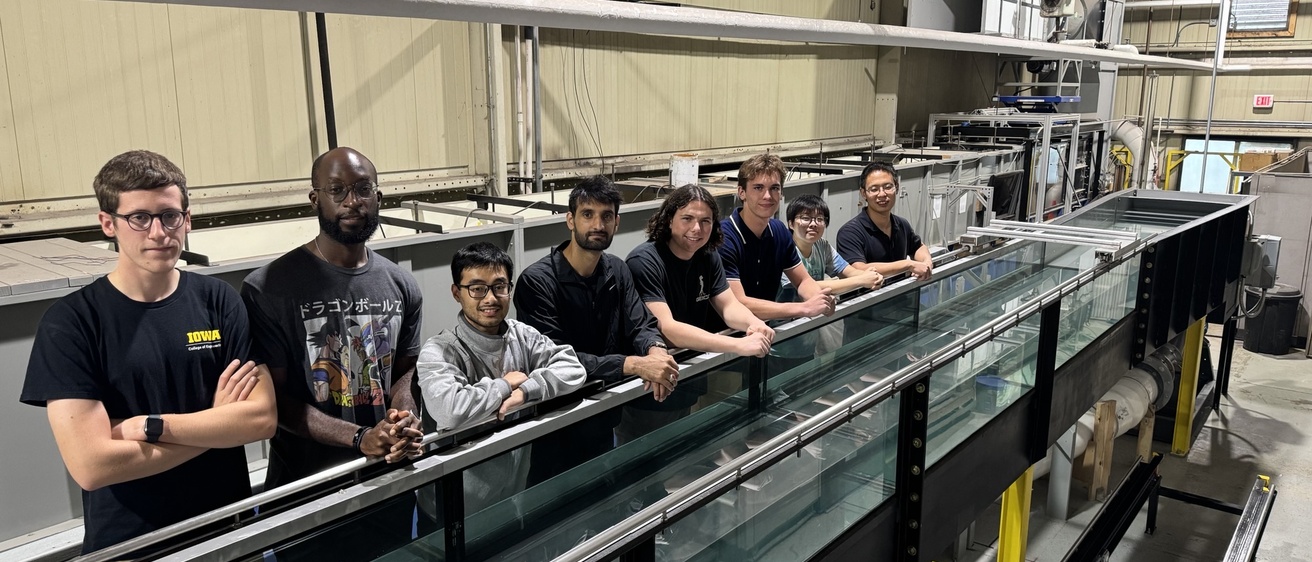1. Low turbulence free surface water tunnel
Our newly constructed free-surface water tunnel features a test section with dimensions of 0.5 m × 0.5 m × 8 m. The maximum bulk velocity is 1.5 m/s, and the turbulent intensity level is below 0.6%. The combination of the long test section and high maximum velocity enables the generation of turbulent flows across a wide range of Reynolds and Froude numbers, including turbulent boundary layers with a Reynolds number based on wall shear stress (Retau) greater than 7,000.

2. Defocusing Particle Image Velocimetry (DDPIV)
Two-dimensional Particle Image Velocimetry (2D-PIV) has been successfully employed to quantitatively map unsteady velocity fields in 2D planes across a wide range of scales. However, 2D-PIV measurements offer limited insights into the dynamics of three-dimensional unsteady turbulent flows. DDPIV is based on the defocusing concept originally introduced by Professor Mory Gharib and Dr. Chris Willert [1], which can instantaneously resolve the turbulent motions in a 3D volume space. In our laboratory, we have developed a DDPIV system (shown in the picture below) using 3 (or 4) synchronized high-speed cameras (IDT Xtream Mini 3520, Resolution 2560 x 1440, Maximum framerate 2350 fps at full resolution) to time-resolve unsteady turbulent flows within three-dimensional volumes of different sizes.
[1] Willert, C. E., & Gharib, M. (1992). Three-dimensional particle imaging with a single camera. Experiments in Fluids, 12, 353-358.
3. High-magnification near-wall PIV
2D-PIV faces challenges in special measurement situations, such as in resolving the think viscous sub-layers of wall-bounded turbulent flows, due to its low spatial resolution limited by the finite size of interrogation window. The recently developed high-magnification near-wall PIV [2], through the combination of high-power continuous laser, specially designed optical lenses, and multi-frame PIV algorithm, can time-resolve the unsteady viscous sub-layers in high-Re turbulent boundary layers. This technique is adapted together with DDPIV to evaluate the drag reduction effect of our turbulence manipulation system and uncover the mechanisms behind the drag reducing flow structures.
[2] Willert, C. E. (2015). High-speed particle image velocimetry for the efficient measurement of turbulence statistics. Experiments in fluids, 56, 1-17.
4. Wave Basin and Towing Tank
Our lab also has access to state-of-the-art ship hydrodynamic research facilities operated by IIHR—Hydroscience and Engineering.
